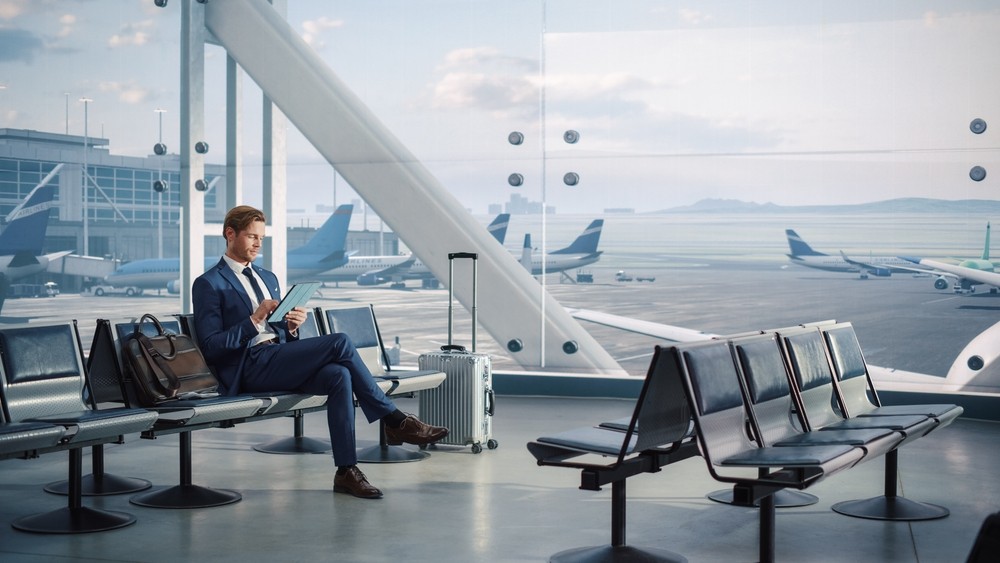In response to the ongoing challenges faced by airports worldwide, including airline disruption, industrial action, technical outages, and weather disturbances, research from intelligent airport management platform, AeroCloud, reveals that the sector is gearing up for a significant technological transformation in 2024.
The Getting on the Runway to Growth report reveals that upgrading legacy technologies and systems is one of the top commercial priorities for 92% of the 200 global airport leaders surveyed – signalling a tech revolution on the horizon. Furthermore, 60% recognise that not investing in technologies such as SaaS platforms, automation, and AI, poses a significant risk to their operations in the coming 12 months.
When considering the biggest operational hurdles they face, the need for a technology-driven overhaul is clear. A staggering 40% are still using Excel and Word documents to store and manage operational information, such as gate management and the RONs (Remain Overnights), while 48% said that an absence of shared collaboration platforms means communication between stakeholders such as ground handlers and airlines is ineffective.
Additionally, one-third of airport leaders say that a lack of real-time analytics insights (33%) and the inability to track a passenger's journey from curb to gate (34%) are inhibiting them from improving passenger experiences and flow, as well as undermining their responsiveness.
George Richardson, CEO and Co-founder of AeroCloud, said, “The over reliance on manual processes and legacy systems presents a massive hurdle to airports’ growth. The modern aviation landscape demands the adoption of strategic, cutting-edge technology to overcome the ongoing disruption we’re witnessing in a post-Covid world. The airports that do embed new technologies into their operations will be the best positioned to respond effectively when disruption happens, while also boosting passenger experiences and driving commercial success in the future.”
Fuelling growth through innovation in 2024
The findings from the report identified four areas where airports leaders plan to focus their technology investments to drive the biggest impact on their operations, revenue and growth:
• Democratising operational data: Excel is no way to manage and track airport operational information. It’s prone to human error, quickly goes out of date and can easily lead to miscommunication by fuelling siloed practices. Consequently, 30% of global airport leaders said that a move towards resilient cloud-based solutions that facilitate real-time data sharing among stakeholders would substantially improve their airport operations.
• Seamless airline onboarding: New technologies hold the potential for many airports to increase their capacity and subsequently attract new airlines, a priority for 91% of global airport leaders. That’s why they’re particularly interested in investing in common-use tools for airlines to share resources, such as check-in desks (39%), with this rising to 45% in the U.S. They also see the value in using machine learning (ML) tools to estimate passenger numbers accurately to plan for demand (37%), and automatic on-block and off-block time tracking to power more accurate billing with airlines (27%).
• Powering frictionless experiences: The report underscores the significance of investments in self-service kiosks and biometric ID verification to streamline passenger journeys. These technologies reduce wait times, enhance security, and contribute to an overall smoother airport experience. Interestingly, this is especially important to airport leaders in the U.S. Common use self-service kiosks, such as check-in and bag drop, and biometric ID verification were both ranked in the top three tools that would substantially improve airport operations, by 46% and 44% of U.S. leaders respectively, versus 39% for both globally.
• Optimising passenger flow: Accurate, real-time insights into passenger flow enable airports to identify and address bottlenecks promptly, something that 89% recognise is important to the overall passenger experience. Airport leaders in Italy highlighted computer vision technology to manage flow by tracking passengers anonymously from curb to gate as the top tool (38%) for improving their airport operations, compared to 34% worldwide. By leveraging this advanced technology, airports can boost overall efficiency, increase revenue opportunities and enhance the passenger experience.






